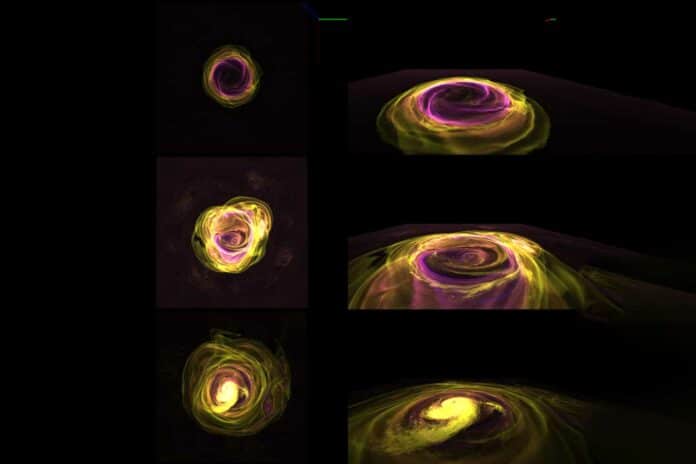The universe is full of neutron stars, which are the compact remains of supernova explosions. Since the majority of stars are found in binary systems, a neutron star may have a stellar partner. When matter from the neutron star’s partner accumulates on its surface and is crushed by the star’s strong gravity, a thermonuclear explosion, known as an X-ray burst, takes place.
Using the Summit supercomputer at the Oak Ridge Leadership Computing Facility, astronomers from the State University of New York at Stony Brook and the University of California at Berkeley created 3D simulations of X-ray bursts on the surfaces of neutron stars and compared 2D and 3D models of X-ray bursts.
The team’s ability to complete the 3D simulations was greatly aided by Summit’s high-performance computing capacity, further enhanced by its GPUs. The GPUs took on all of the processing load. Using all of the GPUs on a Summit compute node allowed the researchers to execute the simulations faster than all of the CPU cores on the node.
Michael Zingale, who led the project and is a professor in the Physics and Astronomy department at SUNY Stony Brook, said, “We can see these events happen in finer detail with a simulation. We want to understand the properties of the neutron star because we want to understand how matter behaves at the extreme densities you would find in a neutron star.”
The comparison between the models can help researchers calculate the neutron star’s radius by constraining the size of the source.
The team’s prior 2D simulation, which modeled an X-ray burst flame traveling across the neutron star’s surface, provided insights into which the 3D simulation was built. The focus of the 2D investigation was how the flame spread under various circumstances, including surface temperature and rotation rate. The results of the 2D simulation showed that varying physical circumstances caused varying speeds of flame spread.
The 3D simulation on Summit extended those findings by utilizing the Castro code and its underlying exascale AMReX library.
To simulate the early evolution of the flame, researchers employed a 3D model with a rotation rate of 1,000 hertz and a neutron star crust temperature several million times hotter than the sun. The researchers utilized the mass of the ash material created by the flame to calculate how quickly the 3D flame burned compared to the 2D flame since the 3D flame does not remain completely circular as it moves around the neutron star.
The growth patterns in both simulations were identical despite the 2D model’s burning occurring slightly more quickly. The models’ agreement suggested that 2D simulation is still a valuable technique for simulating flame propagation on a neutron star’s surface.
But more complicated interactions, such the turbulence the flame will meet on its journey due to the star’s convective burning in the accreted layer of matter, will require 3D simulations. In 2D and 3D, turbulence differs fundamentally. Furthermore, by widening the region of the star, they simulate and enhance the physical authenticity of the nuclear burning. The researchers may add even more realism by applying the “savings” they realize by being able to follow much of the evolution in 2D.
Zingale said, “We’re close to modeling the flame spread across the whole star from pole to pole. It’s exciting.”
Journal Reference:
- Michael Zingale, Kiran Eiden and Max Katz. Comparing Early Evolution of Flames in X-Ray Bursts in Two and Three Dimensions. The Astrophysical Journal. DOI 10.3847/1538-4357/ace04e
